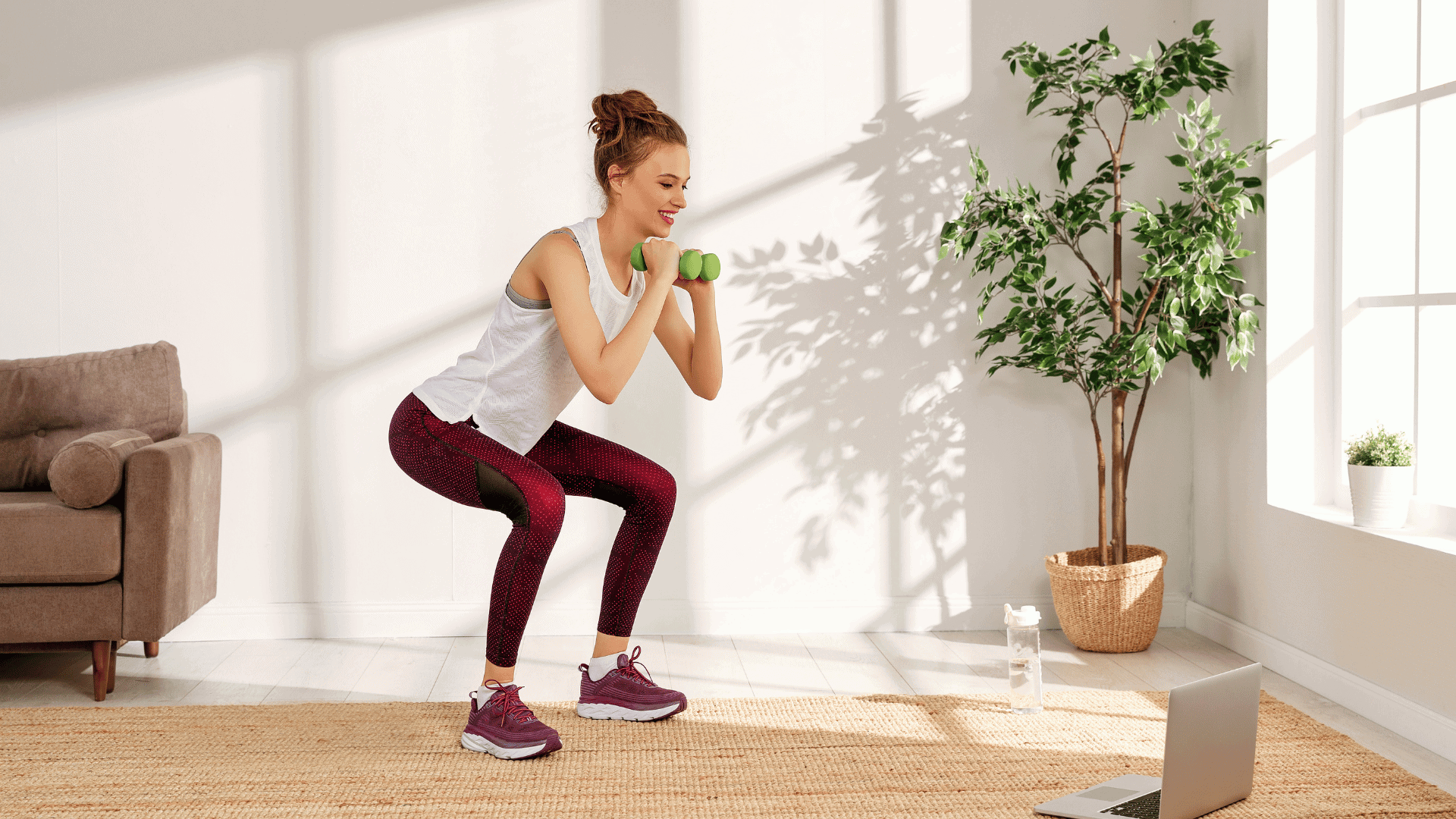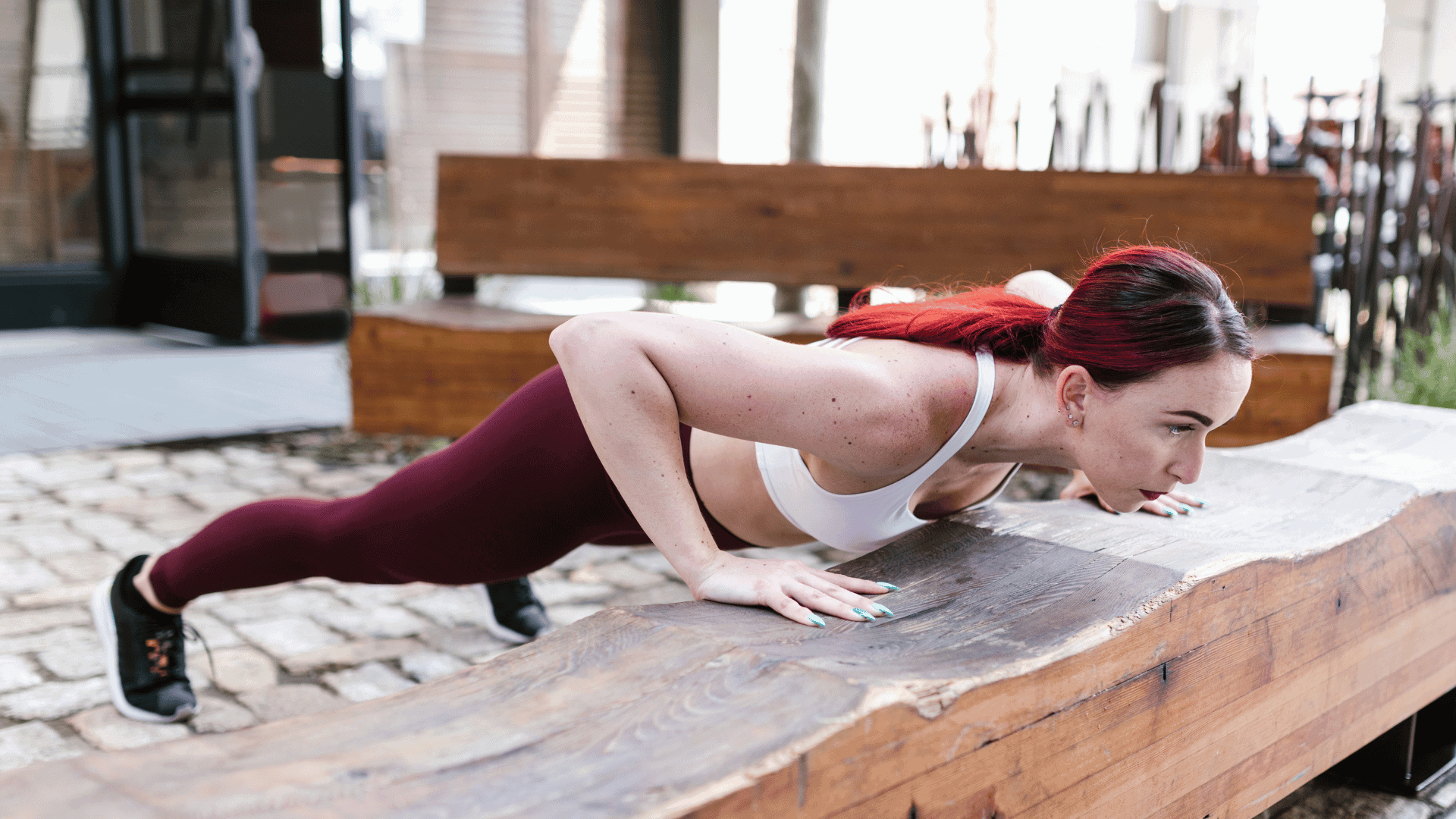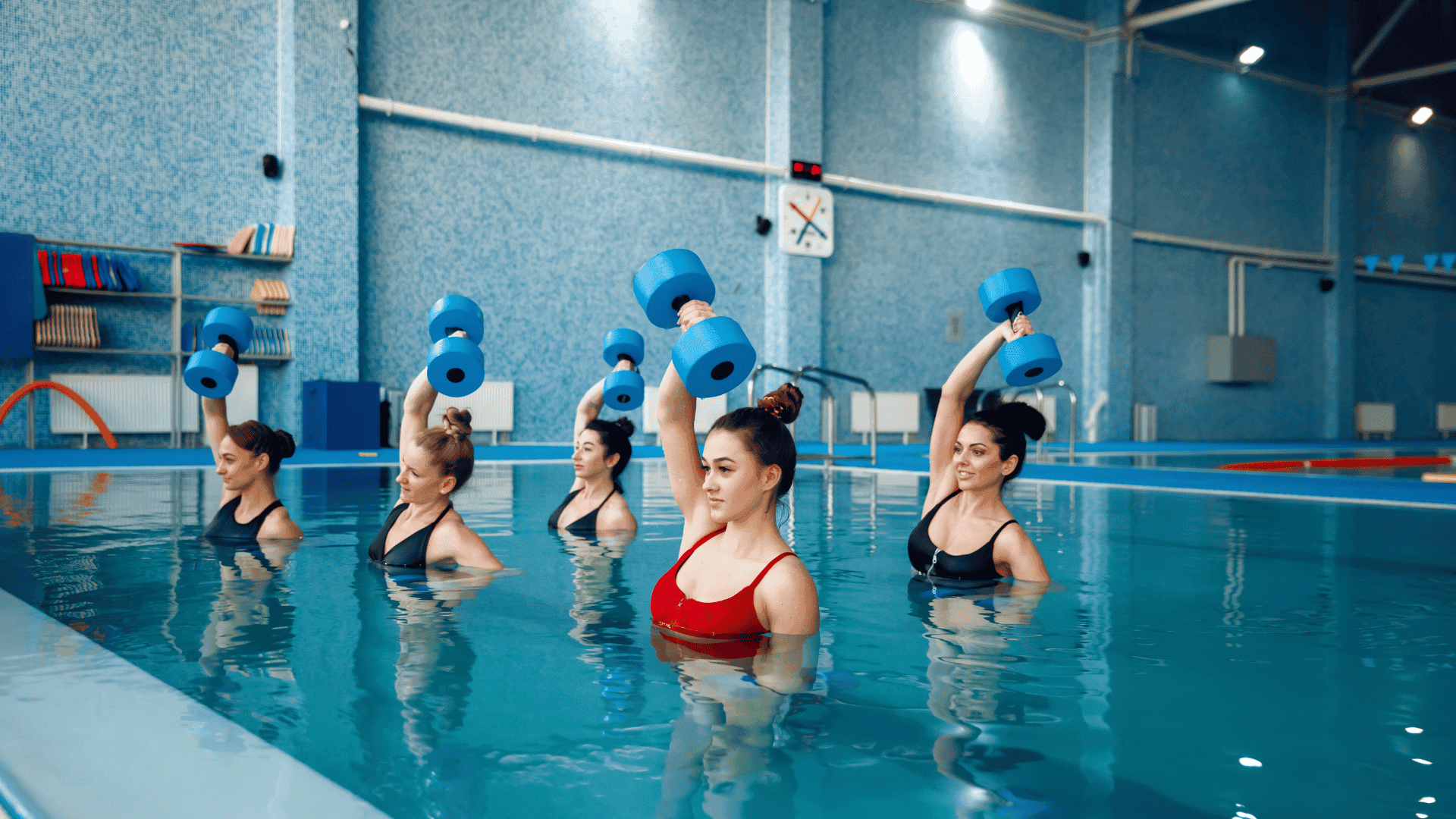Having a baby changes everything, including your body.
After giving birth, it’s normal to feel like a stranger in your own skin. You may be eager to get back to movement, or maybe you just want to feel strong again.
The good news? You don’t need to rush, do intense workouts, or figure it all out alone.
This postpartum workout plan was built to help moms (old or new) reconnect with their bodies safely and gradually.
It focuses on healing your core and pelvic floor first, then gently rebuilding your strength over 12 weeks.
Whether you had a vaginal birth or a C-section, whether you’re 6 weeks or 6 months postpartum, this plan meets you where you are.
In this blog post, you’ll get a full breakdown of this 3-phase, 12-week postpartum workout plan designed to help you recover, rebuild, and feel like yourself again
How to Start Working Out After Having a Baby
Before you jump back in, remember, your body just did something amazing. Give yourself time to heal, check with your doctor, and start slow.
The most important thing is listening to your body and moving at your own pace.
Here’s how to get started safely.
Phase 1: Weeks 1–4 – Recovery and Reconnection

The goal in this phase is not to “bounce back.” It’s to gently reconnect with your body, support healing, and start moving again in a way that feels safe, not stressful.
This is where you lay the groundwork for strength, energy, and stability.
You’ll focus on four simple pillars: core recovery, walking, mobility, and light movement. Do what you can. Some days will be easier than others. (That’s normal)
Core and Pelvic Floor (Daily)
These two areas need the most attention first. They’ve done serious work and need time and support to recover.
- Kegels (3 sets of 10): Gently squeeze like you’re stopping your pee. Hold 2–3 seconds, then relax. Breathe normally, and don’t hold your breath.
- TVA Breathing (10 reps): Lie on your back with knees bent. Inhale slowly. As you exhale, pull your belly button down toward your spine, like you’re zipping up tight jeans. Hold for a second, then release.
Tip: You should feel your deep core tighten, not bulge. If anything pushes out, back off and go gentler.
Walking for Circulation (Most Days)
Walking helps get your blood flowing, supports healing, and boosts your energy without adding pressure.
- Start with 5 to 10 minutes. That might mean circling your living room or going down the block.
- Increase to 15–20 minutes when you’re ready. Bring the stroller or go solo—either works.
- Keep it flat. Skip hills for now.
Gentle Stretching (3–4 Days a Week)

Your neck, shoulders, and hips tighten fast from nursing and carrying your baby. A few simple stretches help relieve that tension.
- Cat-Cow (30 seconds): On hands and knees, slowly round and arch your spine.
- Chest Opener (30 seconds): Clasp your hands behind your back and gently pull your shoulders back.
- Neck Rolls (10 seconds each way): Keep it slow and relaxed.
- Hip Flexor Stretch (30 seconds each side): Step one foot forward into a gentle lunge and hold.
Tip: You can do these on the floor, in bed, or even seated on a couch. Whatever works.
Light Strength (Optional Around Week 3–4)
If your body feels good and your doctor gives the go-ahead, you can start basic bodyweight moves. These will help you get back slowly into strength training without any pressure whatsoever.
- Wall Push-Ups (2 sets of 10): Stand facing a wall. Lower your chest toward the wall, keeping your body straight. Push back up slowly.
- Bodyweight Squats (2 sets of 10): Feet shoulder-width apart, sit your hips back like you’re reaching for a chair. Stop if you feel pressure in your belly.
- Bicep Curls with Soup Cans (2 sets of 12): Use cans or light dumbbells. Curl them up slowly, elbows tight to your sides.
These moves take just minutes a day and make a difference. Stick with it, and by the end of this phase, you’ll feel more stable, more connected, and more ready to move forward.
Phase 2: Weeks 5–8 – Build Your Foundation

Once your body feels more stable, it’s time to build strength that supports your everyday life.
This phase adds more total-body movements, light resistance, and slightly longer sessions—still safe, still gentle.
You’re not pushing hard. You’re practicing consistency. Think of it as upgrading your base layer of strength while your body continues to heal and adjust.
Total-Body Circuit (3 Times a Week)
This circuit targets your main muscle groups while keeping it low-impact.
You’ll move between each exercise in a loop. Take breaks anytime. This builds strength and adds light cardio without feeling like a “hard workout.”
- Glute Bridges (3 sets of 15): Lie on your back with knees bent. Push through your heels to lift your hips up, then lower. Squeeze your glutes at the top.
- Dumbbell Squats (3 sets of 10): Hold light weights or soup cans at your sides. Sit your hips back like you’re reaching for a chair, then stand tall.
- Seated Dumbbell Shoulder Press (3 sets of 10): Sit upright. With dumbbells at shoulder height, press them overhead, then lower slowly.
- One-Arm Dumbbell Row (3 sets of 12 each arm): Place one hand and knee on a bench. Pull a dumbbell toward your waist, keeping your elbow close to your side.
- Modified Plank (3 sets of 20 seconds): On hands and knees, lower your forearms to the floor. Hold your core tight and hips steady. Rest as needed between rounds.
Tip: Start with 1 round. Add more as your stamina grows. If form slips, rest or stop—progress is still progress.
Light Cardio (2 Times a Week)

Cardio now plays a bigger role, but it still stays joint-friendly. You’re building stamina, not chasing sweat.
- Brisk Walks (20–30 minutes): Try to walk at a pace where talking is possible but breathing is slightly deeper.
- Low-Impact Machines: Use an elliptical, recumbent bike, or rowing machine for 20 minutes. Go slow to start, then test adding 1-minute intervals (faster effort, then back to easy).
Gentle Core Work (Daily or 4–5 Days a Week)
If your core is healing well and no doming is visible, these safe movements help strengthen it from the inside out.
- TVA Breathing (10 reps): Keep this as your daily reset.
- Dead Bug (2 sets of 10): Lie on your back, arms up, knees bent. Lower one arm and the opposite leg, then return and switch sides. Keep your belly flat—not bulging.
- Side Plank (Knees Bent, 2 sets of 15 seconds each side): Lie on your side, knees bent. Lift hips off the floor, keeping your body in a straight line.
Tip: These core moves don’t look flashy, but they build the strength your back, hips, and abs need for daily life.
You can finish each session with a few familiar stretches from Phase 1. Or try a short, beginner yoga video once a week for calm and recovery.
As your strength grows, the real win here is learning to move well with confidence. Stick to this rhythm, and Phase 3 will feel like a natural next step.
Phase 3: Weeks 9–12 – Return to Fitness

By now, your body may feel more stable, your strength is coming back, and you’re ready for a little more.
This phase introduces more structured workouts, moderate weights, and cardio that challenges your endurance—if you’re cleared and feeling ready.
You’re not rushing to get your “pre-baby body” back. You’re stepping into long-term strength and energy, one workout at a time.
Strength Training (4 Days a Week, Split by Upper and Lower Body)
You’ll alternate between upper and lower body days. Keep weights light to moderate. The goal here is building solid strength—not pushing limits.
Upper Body Days (2x/week):
- Incline Push-Ups (3 sets of 10–12): Use a bench or counter to reduce pressure. Keep your body in a straight line and lower your chest slowly.
- Dumbbell Bench Press (3 sets of 10–12): Lie on your back with dumbbells. Press them up over your chest, then lower slowly.
- Lat Pulldown or Resistance Band Row (3 sets of 10–12): Use a machine or band anchored at chest height. Pull toward your chest, squeezing shoulder blades together.
- Lateral Shoulder Raises (3 sets of 10): Raise dumbbells out to the side, keeping a slight bend in your elbows.
- Triceps Extensions (3 sets of 10): Hold one dumbbell overhead with both hands. Lower it behind your head, then raise it back up.
- Bicep Curls (3 sets of 12): Keep elbows tight to your sides. Curl dumbbells up slowly, then lower with control.
Lower Body Days (2x/week):
- Squats (3 sets of 12): Use bodyweight or hold dumbbells. Sit hips back and keep knees tracking over toes.
- Lunges (3 sets of 10 per leg): Step forward or backward. Keep your front knee behind your toes and your torso upright.
- Deadlifts (3 sets of 10): Use light dumbbells. Hinge at your hips, keep your back straight, and lower the weights to mid-shin.
- Step-Ups (3 sets of 10 per leg): Use a low step or bench. Step up with control, drive through your heel, then step down slowly.
- Leg Curls (3 sets of 12): Use a resistance band looped around your ankles or a hamstring curl machine.
- Calf Raises (3 sets of 15): Stand tall and lift your heels off the ground. Lower slowly.
Tip: Do not rush. If something feels too intense, reduce weight or reps. Steady effort builds better results.
Cardio with Intention (1 to 2 Times a Week)

Now’s a good time to add more challenge—only if your core feels stable and you’re cleared for impact.
- Stroller Walks with Hills (30 minutes): Push the stroller through a slightly hilly route. Keep your core tight and pace steady.
- Jog/Walk Intervals (30 minutes): Alternate 1 minute jogging with 2 minutes walking. Repeat for up to 10 rounds.
- Swimming or Beginner Aerobics Class: These are great full-body options that are easy on the joints and boost your energy.
Tip: One session a week is fine. Two is great. Just don’t skip your rest days, they matter more now than ever.
Core and Flexibility (Ongoing)
You can continue TVA breathing and core work from Phase 2. If your diastasis has healed, and your core is ready, you can now include basic crunches and longer planks.
- Crunches (2 sets of 15): Lie on your back, knees bent. Gently lift your shoulders off the floor. Avoid pulling on your neck.
- Planks (Hold for 30–45 seconds): Start on elbows or hands. Keep your hips steady and core tight.
- Yoga or Pilates (1x/week): Choose a beginner class or short session. Focus on breathing, flexibility, and calm.
At this point, you’re building real strength, inside and out. You’ll start noticing better posture, improved stamina, and more confidence in everyday movement.
You’re not just working out. You’re rebuilding your body on your terms.
Making It Work as a New Mom

No matter how long it’s been since you gave birth, your body is still postpartum. Whether you’re six weeks in or six months out, these workouts are here to meet you where you are.
Life with a baby (or more than one) is never predictable. Some days you’ll have time. Other days you won’t. What matters most is that you keep showing up—even if that means five minutes here and there.
Fit It Into Your Day
Use nap windows or solo playtime. You don’t need a full hour. A 10-minute core circuit or a quick walk with the stroller counts.
If your day feels broken up, split your workouts. You might do strength training in the morning and stretching at night. (That’s still progress)
The key is to lower your expectations without lowering your standards. You don’t have to go hard. You just have to keep going.
Use What You Have
Bodyweight is enough. Fancy equipment isn’t required. Soup cans work just fine. So does a towel as a mat. Your home can be your gym.
A wall, a couch, a floor. (all of it works) Even the stroller becomes a tool. A walk outside can support both your physical health and your mental clarity.
Adapt to Your Energy
Some days you’ll feel strong. Use that momentum to do more. Other days you’ll feel wiped. That’s okay, too. Swap the workout for light stretching or a short walk. It still counts.
If you’re running low on sleep, skip the reps and just move gently. Showing up in any form still builds the habit and reinforces your commitment.
Consistency builds momentum. And momentum leads to results, even if the pace is slower than before.
Making fitness work as a mom isn’t about discipline. It’s about flexibility, patience, and using what’s available. When you drop the pressure to do it all, you actually do more.
You’re Stronger Than You Think, Mama
You’ve made it through the hardest part—getting started. Whether you’re still in week one or you’re wrapping up week twelve, just showing up for yourself is proof of strength.
The progress might feel slow, but it’s happening.
You’re rebuilding your body, your energy, and your confidence with every rep, every stretch, every walk.
This plan wasn’t about perfection. It was about consistency, healing, and making fitness feel doable again. You didn’t need a gym. You didn’t need hours of free time. You just needed a way forward.
Now that you’ve laid the foundation, you can keep going. Maybe that means repeating a phase. Maybe it means moving into a new challenge.
Either way, you’ve proven you can take care of yourself while taking care of everyone else, too.
You are capable. You are resilient. And you’re only just getting started.
Rebuild Strength With Confidence

Getting back to movement after baby isn’t about doing more, it’s about doing what feels safe and sustainable.
That’s why I created the Free Weekly Gym Workout Plan for Women.
This simple guide gives you a clear schedule to follow, so you don’t have to figure it all out on your own.
With just a few workouts each week, you’ll rebuild strength, regain energy, and feel more like yourself again.
Frequently Asked Questions
1. When can I start working out after having a baby?
Always wait until your healthcare provider gives you the green light. For many moms, this is around the 6-week postpartum checkup—but if you had a C-section or complications, you may need longer. Listen to your doctor, and to your body.
2. Is it too late to start if I gave birth months ago?
Not at all. Postpartum recovery has no deadline. Whether you’re 6 weeks, 6 months, or 2 years postpartum, this plan still supports healing, strength, and energy.
3. Can I do this if I had a C-section?
Absolutely, but go slowly. Focus on core reconnection first and avoid any moves that strain your incision area or cause pain. Once cleared by your doctor, you can follow this plan with the same gradual progression.
4. Do I need a gym or equipment?
No. Everything in this plan can be done at home. You’ll use bodyweight, light dumbbells (or soup cans), and things you already have—like a towel, chair, or stroller.
5. What if I miss a few days or feel too tired to keep up?
That’s normal. Some weeks will be harder than others. The goal is consistency, not perfection. Even one short workout a week keeps you in the game. Give yourself grace and keep going.










